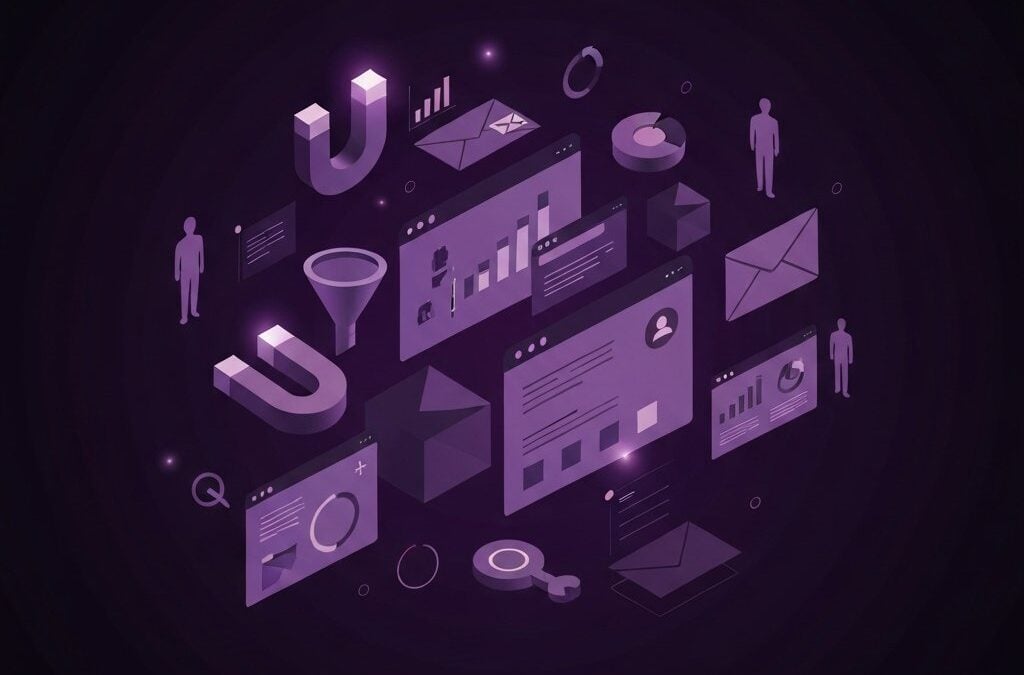Introduction
Artificial intelligence is revolutionizing the advertising world. AI drives smarter, faster, and more creative campaigns. Marketers use machine learning to craft better experiences. Campaigns become dynamic and personalized by processing real-time data. AI handles vast information to optimize targeting. The emergence of AI tools creates endless opportunities. The technology boosts engagement while reducing wasted expenditures. In this article, we explore how AI transforms advertising. We examine personalization, targeting, creative automation, and predictive analytics. Each section provides detailed insights with real-world examples and comparisons. We compare key features in a table to simplify the benefits and challenges. The table shows how each AI aspect influences campaigns and future trends. Marketers achieve robust results with AI-driven strategies. We see examples from noted sources such as Deloitte, Google Blog, and Campaign Asia. Readers can visit the Promarkia Blog for more insights. The transformation is profound and fast. With a forward-looking perspective, advertisers learn to navigate ethical data use and privacy. This article shares a balanced view of benefits and challenges. In sum, AI fuels a creative revolution. Every sentence in this introduction is short and clear while preparing you for the deep dive ahead into AI-powered advertising.
AI and Personalization at Scale
AI builds personalized experiences that enhance consumer interaction. It tailors messages using customer data. This process increases relevance and boosts trust. Marketers now improve engagement by addressing individual needs. Data comes from social media, browsing history, and purchase behaviors. Algorithms then craft user-specific ads. Personalization raises conversion rates sharply. Advertisers succeed by creating experiences that speak directly to consumer desires. For instance, AI tracks buying habits and adjusts messages in real time. The resulting campaigns feel intimate and effective. Personalization also drives loyalty and brand recognition. AI-powered systems monitor trends and predict evolving preferences. Advertisers reduce guesswork by relying on factual insights. The personalized approach saves time and budget. Small tweaks make big differences. Our comparison table below captures these insights:
| Aspect | Benefit | Challenge | Future Outlook |
|---|---|---|---|
| Personalization | Higher engagement and loyalty | Data privacy concerns | Deeper customization methods |
| Enhanced Targeting | Optimized reach to active audience | Risk of oversaturation | Greater real-time precision |
| Creative Automation | Rapid production of creative content | Possible loss of human touch | Blended creative strategies |
| Predictive Analytics | Better campaign foresight | Dependence on historical data | Evolving proactive measures |
Each component represents a pillar of AI’s influence in modern advertising. The impact is measurable and transformative. Marketers can apply these benefits to improve customer relationships. By using AI, companies save time and lower operational costs. New strategies arise from robust analytical data. Eventually, AI will become a vital business asset. Marketers should approach personalization carefully to avoid privacy pitfalls. The emerging landscape is competitive but exciting. As ethical rules evolve, professionals will refine data use practices. The overall effect creates a win-win scenario for both brands and consumers.
Enhanced Targeting and Efficiency
AI refines ad targeting with impressive precision. It reviews real-time data from multiple sources. Brief sentences deliver clear insights. The technology segments audiences more accurately. It uses trends and demographics to tailor messages. Efficiency improves because spending focuses on receptive consumers. AI adjusts campaigns automatically when performance shifts. Each ad optimizes continuously during its runtime. Marketers enjoy better returns on investments. The AI system learns from each interaction to improve delivery. Efficiency means more conversions and less wasted budget. Advertisers also gain instant feedback on campaign performance. Real-time data facilitates faster decision making. Performance analytics guide adjustments swiftly. This dynamic process minimizes ineffective spending. The approach diminishes the gap between strategy and execution. Over time, enhanced targeting reduces costs and increases customer retention. Ethical data collection and secure transmissions remain crucial. Analysts warn against bias in targeting models. However, firms can balance performance with fairness. AI creates a more responsive and adaptive advertising ecosystem. The future holds smarter resource allocation and continuously improving campaigns for every marketer.
Creative Automation in Advertising
Creative automation is a new frontier in advertising. AI tools capture trends and generate content quickly. They assist in each design and text component. By automating creative tasks, brands maintain consistency across channels. Tools analyze previous campaign data to select optimal images and engaging headlines. Creative tasks become iterative and efficient. Automated systems suggest captivating messages in seconds. The creative process now adopts a data-driven approach. Advertisers can experiment with formats rapidly. The use of creative automation ensures the campaign stays fresh. Marketers control the balance between machine work and human creativity. Rapid creative production supports timely responses to market shifts. Analytics feed into creative decisions, making ads more effective. The process is well documented in industry reports and expert blogs. As creative automation evolves, collaboration between algorithms and people becomes vital. Combining creativity with analytics makes campaigns more compelling. Nonetheless, ensuring authenticity in messaging remains a challenge. A blend of automation and human insight will define the future of creative advertising. The evolution of tools promises smoother workflows and greater outcome predictability.
Predictive Analytics and Future Trends
Predictive analytics propel campaigns forward with vital foresight. AI maps historical data to forecast market trends. It uses simple algorithms and clear logic. The system detects emerging consumer behavior swiftly. Through data visualization, trends become apparent. Marketers plan future campaigns with these insights. Predictive analytics reveal what products may succeed. Advertisers can test ideas and adjust budgets early. Trends are not only observed; they are predicted. Companies prepare for shifts well in advance. Using this data, campaigns adjust before trends are widespread. Predictions translate into faster, smarter responses. Providers rely on models to minimize risks. The approach builds competitive advantage and market control. Data sources improve, and machine learning models refine continually. This creates more accurate forecasts over time. Caution is necessary to avoid over-reliance on predictions. Market dynamics can be unpredictable and complex, requiring human judgment. Ethical use and continuous updates in data management are essential. For examples of this forward-thinking, explore insights from Deloitte and other industry leaders. Smart businesses use these analytics to guide investments and strategic decisions emphatically.
Navigating Ethical Considerations
Ethical considerations rise as AI dominates advertising. Privacy remains a key concern. Marketers must protect user data diligently. Transparency and trust are essential for lasting success. Regulatory compliance now appears at the forefront. Ethical guidelines require consent and secure data handling. Advertisers revisit policies regularly to align with evolving standards. Balancing innovation with integrity is a delicate act. AI systems learn from vast datasets but must never exploit personal details. Ethical norms dictate responsible use. The debate over data is lively among experts. Marketers must reinforce consumer trust without sacrificing performance. This approach minimizes backlash and legal issues. Security measures and constant audits ensure compliance. Each campaign undergoes ethical evaluations before launch. The overarching aim is to adapt technology while upholding user rights. As standards tighten globally, ethical practices become a competitive advantage. Advanced algorithms interlace technology with human values. Over time, transparent practices forge lasting consumer relationships. The industry must adopt best practices and robust systems consistently. Maintaining ethical guidelines is non-negotiable for sustainable growth in AI-powered advertising.
The Road Ahead for Advertisers
The future of advertising is intertwined with sophisticated AI tools. Technologies develop quickly to meet emerging challenges. Advertisers embrace AI’s potential to innovate continuously. The roadmap includes more interactive campaigns and hybrid approaches. AI and human creativity blend seamlessly, ensuring brand authenticity. Cost efficiency and effectiveness remain central. Future campaigns will likely see further integration of augmented reality and voice search. The evolution offers new platforms and personalized experiences. Each development, though complex, builds on simple principles of engagement and trust. Audiences expect innovative content delivered promptly. Companies must adopt agile practices and remain adaptable to change. Leaders experiment with novel techniques while respecting ethical boundaries. In this fast-paced digital era, flexibility proves invaluable. Successful advertisers harness both technology and creative intuition. They balance high efficiency with careful messaging. The computed future remains unpredictable but full of promise. Forward-thinking strategies hold the key to navigating this exciting terrain. With continued innovation, the advertising landscape will remain vibrant and consumer-focused.
Conclusion and Next Steps
The impact of AI on advertising is very significant. Marketers use technology to drive precision and creativity. AI enables better personalization, sharp targeting, creative automation, and robust predictive analytics. The debate on ethics encourages strong data practices and compliance. Both small businesses and large brands feel the influence of AI. Every stage of the process contributes to a smarter advertising ecosystem. The detailed analysis above shows that AI is both transformative and necessary. New tools continue to evolve alongside market demands. Companies must prepare for further integration of advanced analytics. The journey ahead is challenging but also full of opportunities. For more exciting updates, readers may revisit industry blogs and global news sources. The article also links insights from Promarkia Blog. Interested advertisers can explore additional content on reputable resources like Deloitte, Google Blog, and Campaign Asia. This balance of internal strategies and external innovations is crucial. The pathway to future advertising is marked by both progress and care.



